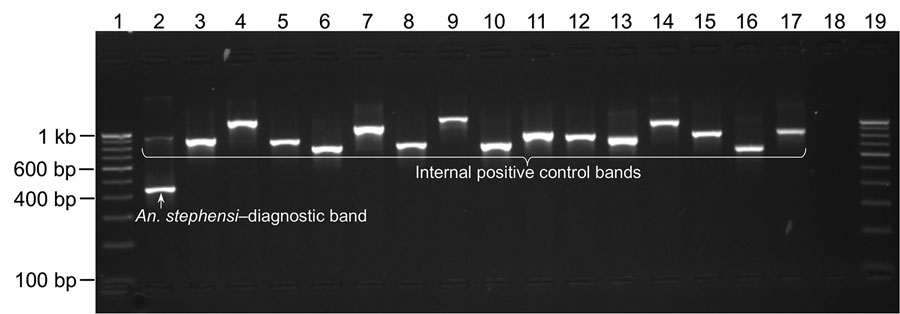Volume 29, Number 1—January 2023
Research
Molecular Tools for Early Detection of Invasive Malaria Vector Anopheles stephensi Mosquitoes
Figure 4

Figure 4. Gel photograph showing the result of PCR specific to invasive malaria vector Anopheles stephensi mosquitoes (protocol 1) on some individual mosquitoes belonging to the genus Anopheles, Culex, and Aedes. Lanes 1 and 19, 100-bp DNA ladder; 2, An. stephensi; 3, An. gambiae; 4, An. dirus; 5, An. albimanus; 6, An. quadrimaculatus; 7, An. farauti; 8, An. freeborni; 9, An. funestus; 10, An. atroparvus; 11, An. merus; 12, An. fluviatilis species T; 13, Cx. quinquefasciatus; 14, An. subpictus molecular form A; 15, An. minimus sensu strictu; 16, Ae. aegypti; 17, Ae. albopictus; 18, negative control.
Page created: November 10, 2022
Page updated: December 21, 2022
Page reviewed: December 21, 2022
The conclusions, findings, and opinions expressed by authors contributing to this journal do not necessarily reflect the official position of the U.S. Department of Health and Human Services, the Public Health Service, the Centers for Disease Control and Prevention, or the authors' affiliated institutions. Use of trade names is for identification only and does not imply endorsement by any of the groups named above.